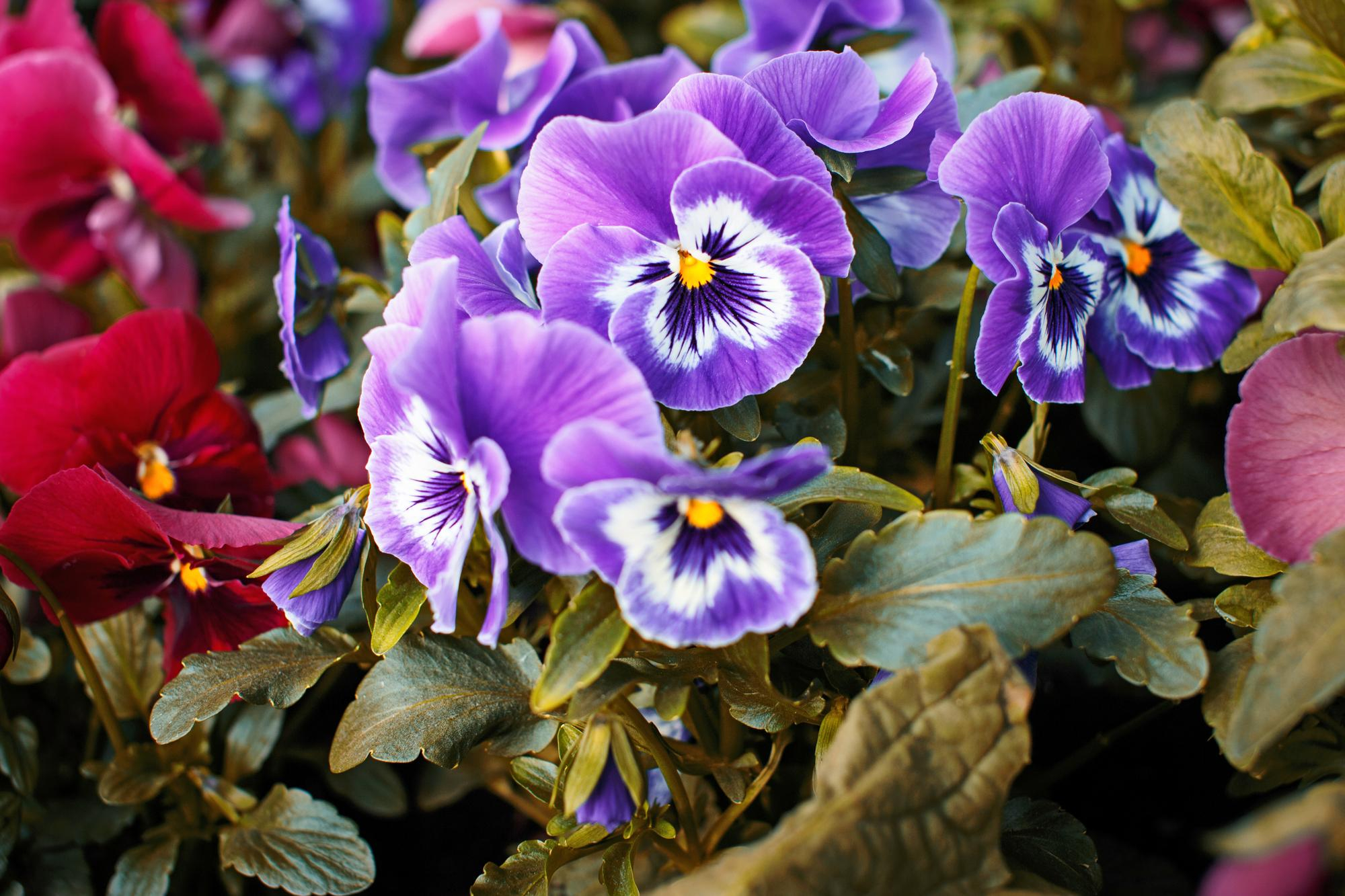Best Purple Flower Garden Plants for Your Perennial Paradise
Creating a vibrant garden filled with enchanting color and fragrant blooms is a dream for many gardeners. Among the various hues available, purple flowers stand out for their unique ability to add elegance and charm to any garden space. In this article, we will explore the best purple flower garden plants, their care needs, blooming seasons, purchasing options, and the numerous benefits they offer to your landscape. Whether you’re looking to create a cottage garden or a stunning rock garden, purple plants can be the perfect addition to your floral palette.
What Are the Top Purple Flower Plants for a Vibrant Garden?
Perennial purple plants are an excellent choice for gardeners seeking longevity and stability in their floral displays. Unlike annuals that bloom for just one season, purple perennials return year after year, providing consistent beauty and structure to your garden. These plants often have vigorous growth habits, forming lush clumps of foliage that can serve as a backdrop for other flowers. Their deep purple hues can create stunning contrasts against the vibrant greens of their leaves, making them ideal for any garden setting. Furthermore, many perennial purple varieties are low-maintenance, adapting well to various soil types and environmental conditions, thus making them perfect for both novice and experienced gardeners alike.
What Are the Most Popular Purple Flower Varieties?
When it comes to selecting the best purple flower plants, there are numerous options to consider. Some of the most popular purple varieties include lavender, salvia, and garden phlox. Lavender is not only beloved for its aromatic qualities but also for its stunning purple spikes that attract pollinators. Salvia, with its vibrant flower heads and foliage, can be a striking addition to any flower bed. Garden phlox, with its clusters of purple and white blooms, offers a delightful burst of color throughout the summer. Other notable mentions are clematis, with its expansive range of purple shades, and geranium, which provides both ornamental beauty and ground cover. Each of these plants brings unique characteristics and charm to any garden space.
How to Incorporate Dark Purple Flowers in Your Landscape?
Incorporating dark purple flowers into your landscape can create a dramatic focal point. Use deep purple flowers in combination with lighter shades of purple and contrasting colors such as white or yellow to create depth and visual interest. Plant them in clusters to form a bold statement or intersperse them with other flowering plants for a more natural look. Additionally, consider using hanging baskets filled with purple annuals to draw the eye upward and add dimension to your garden layout. For those with a rock garden, pairing dark purple flowers with rich green foliage can enhance the overall aesthetic, creating a serene and inviting environment.
How to Care for Purple Flower Garden Plants?
Understanding the watering needs of your purple flower garden plants is crucial for their health and vitality. Most purple perennials thrive in well-drained soil and prefer moderate watering, allowing the soil to dry slightly between waterings. It is essential to ensure that the plants do not become waterlogged, as this can lead to root rot. For newly planted perennials, frequent watering may be necessary until their roots are established. Once settled, you can adjust your watering schedule based on weather conditions, ensuring that your purple plants receive adequate moisture without over-saturating the soil.
How to Fertilize Your Purple Flower Garden?
Fertilizing your purple flower garden is another critical aspect of maintaining vibrant blooms and healthy foliage. A balanced fertilizer, rich in phosphorus, can promote blooming and support root development. Applying a slow-release granular fertilizer in early spring will provide a steady supply of nutrients throughout the growing season. Organic options, such as compost or well-rotted manure, can also be beneficial, enriching the soil with essential nutrients while improving its structure. Be cautious not to over-fertilize, as this can lead to lush foliage at the expense of flowers.
What Pests and Diseases Should You Watch Out For?
Like any garden plants, purple flower varieties can be susceptible to various pests and diseases. Common pests include aphids, slugs, and spider mites, which can damage foliage and flowers. Regularly inspecting your plants for early signs of infestation can help you address issues before they escalate. Additionally, diseases such as powdery mildew and root rot may affect your purple perennials, particularly in humid conditions. Ensuring proper air circulation, avoiding overhead watering, and practicing crop rotation can help mitigate these risks and keep your purple garden healthy.
When Do Purple Flowers Bloom Throughout the Year?
The blooming seasons of popular purple flowers vary widely, allowing gardeners to enjoy these beautiful plants throughout much of the year. For example, lavender typically blooms in late spring to early summer, while salvia can offer colorful spikes from early summer until the first frost. Garden phlox often blossoms in mid-summer, providing vibrant color during the height of the growing season. Understanding the specific bloom times of each plant can help you design a garden that features an array of purple flowers blooming at different intervals, ensuring continuous color and interest.
How to Extend the Blooming Period of Purple Plants?
To extend the blooming period of your purple plants, consider deadheading spent flowers regularly. This practice encourages the plant to focus its energy on producing new blooms instead of seed production. Additionally, incorporating a variety of purple flowers with staggered bloom times can create a more dynamic garden display. Mixing in late summer bloomers, such as asters and certain types of clematis, can keep your garden alive with color even as the season winds down. By carefully selecting and maintaining your purple garden, you can enjoy their beauty for an extended period.
What Are the Late Summer Blooming Purple Flowers?
As summer transitions into fall, certain purple flowers continue to shine, providing late-season color to your garden. Asters, with their daisy-like flower heads, bloom in a stunning range of purple shades and are a favorite among gardeners. Additionally, the hardy flower spikes of liatris, also known as gayfeather, can add vertical interest and texture to your landscape. These late summer bloomers not only prolong the beauty of your garden but also serve as vital food sources for pollinators preparing for the colder months ahead.
Where Can You Buy Purple Flower Plants?
When it comes to buying purple flower plants, visiting local nurseries can yield great results. Local garden centers often carry a diverse selection of purple perennials and annuals, providing the opportunity to inspect the health and quality of the plants before purchase. Additionally, knowledgeable staff can offer valuable advice on the best varieties for your specific garden conditions. Specialty nurseries that focus on native and ornamental plants may also have unique purple varieties that can enhance your landscape.
How to Choose Healthy Purple Flower Plants?
When selecting purple flower plants, it is essential to choose healthy specimens to ensure a successful gardening experience. Look for plants with dark green leaves, vibrant blooms, and a robust root system. Avoid plants that show signs of disease, such as yellowing leaves or wilting. Additionally, check the soil in the pot; it should be moist but not soggy. Healthy plants will have a strong, upright growth habit and a well-established root system, which will contribute to their success in your garden.
Are Online Stores Reliable for Buying Purple Perennials?
Online stores can be a reliable source for purchasing purple perennials, provided you choose reputable vendors. Many online nurseries specialize in specific types of plants, offering a wide selection of purple varieties that may not be available locally. Before buying, read customer reviews and check the return policy to ensure you are buying from a trustworthy source. Additionally, ensure that the plants are shipped in appropriate conditions, as proper packaging is critical to their survival during transit. With careful consideration, online shopping can expand your options for incorporating stunning purple flowers into your garden.
What Are the Benefits of Adding Purple Flowers to Your Garden?
Purple flowers are renowned for their ability to enhance garden aesthetics, creating an inviting and visually appealing environment. The range of purple shades, from soft lavender to deep plum, offers endless possibilities for color combinations and contrasts within your landscape. These flowers can serve as focal points in flower beds, border edges, or even as eye-catching accents in hanging baskets. The striking beauty of purple blooms, combined with their ornamental foliage, can elevate the overall appearance of any garden, making it a sanctuary for relaxation and enjoyment.
What Are the Aromatic Qualities of Lavender and Other Purple Flowers?
Aromatic qualities are another significant benefit of adding purple flowers to your garden. Lavender, in particular, is beloved for its soothing fragrance, which can create a calming atmosphere in any outdoor space. The aromatic oils from lavender and other fragrant purple plants can also be beneficial for attracting pollinators, such as bees and butterflies, which play a crucial role in maintaining ecological balance. Incorporating these aromatic purple flowers not only enhances the sensory experience of your garden but also contributes to its overall health and vitality.
How Do Purple Plants Attract Pollinators to Your Garden?
Purple plants are particularly effective at attracting pollinators due to their vibrant colors and nectar-rich flowers. Bees, butterflies, and hummingbirds are often drawn to the bright shades of purple, which stand out against the green foliage of your garden. By incorporating a diverse range of purple flowers, you create a welcoming habitat for these beneficial creatures, helping to sustain their populations. This symbiotic relationship not only enhances the beauty of your garden but also promotes the pollination of other plants, resulting in a more fruitful and thriving garden ecosystem.

